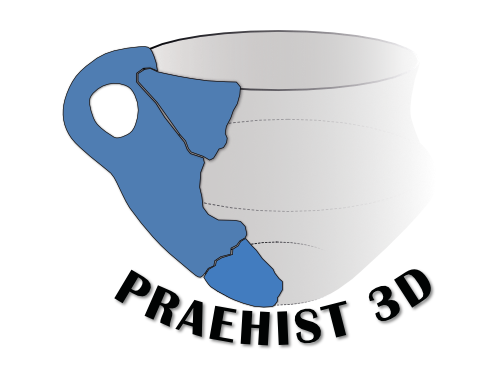Information saved in bones
One of the main traces of past human life and the diet of our ancestors are the written in the bones of the animals they ate. Bones are an ideal information carrier since they are well received in many soils, incurred in huge quantities and belong to the daily life. Zooarchaeologists specialized in dealing with bones from archaeological complexes can draw various inferences from them. If a sufficiently large sample is given, they can not only draw conclusions about the diet but also on the animals in the surrounding landscape.
Since I am not zooarchaeologist I unfortunately can only to a small extent try to draw conclusions from the following bone. So when I lie somewhere completely off, I’d appreciate criticism and comments very much.
The Model
The model discussed here was created from 55 pictures. It has a resolution of 2.5 million polygons and a 16,000 pixels texture. The finely patterned surface, made it easy to align the in a very dense point cloud.
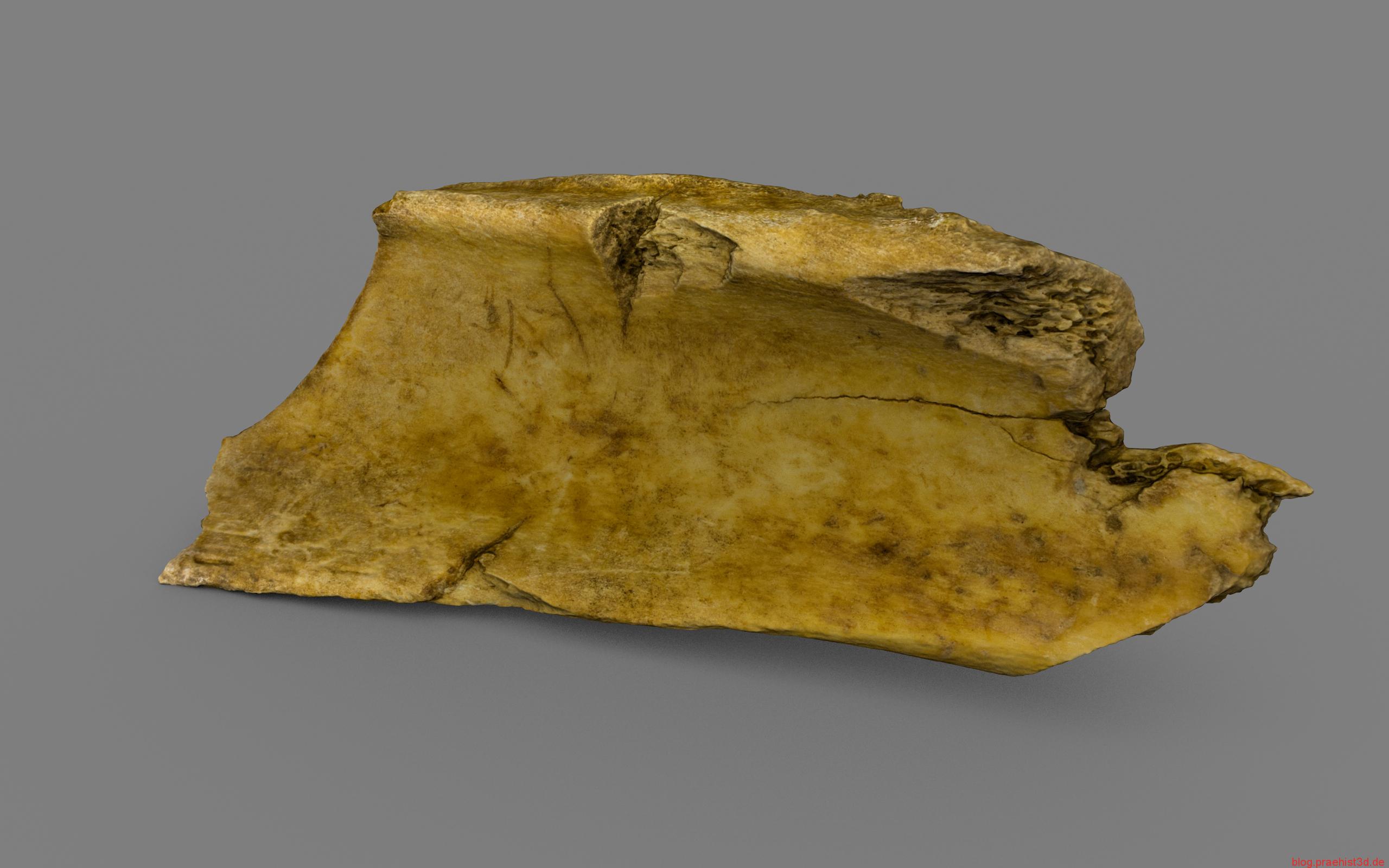
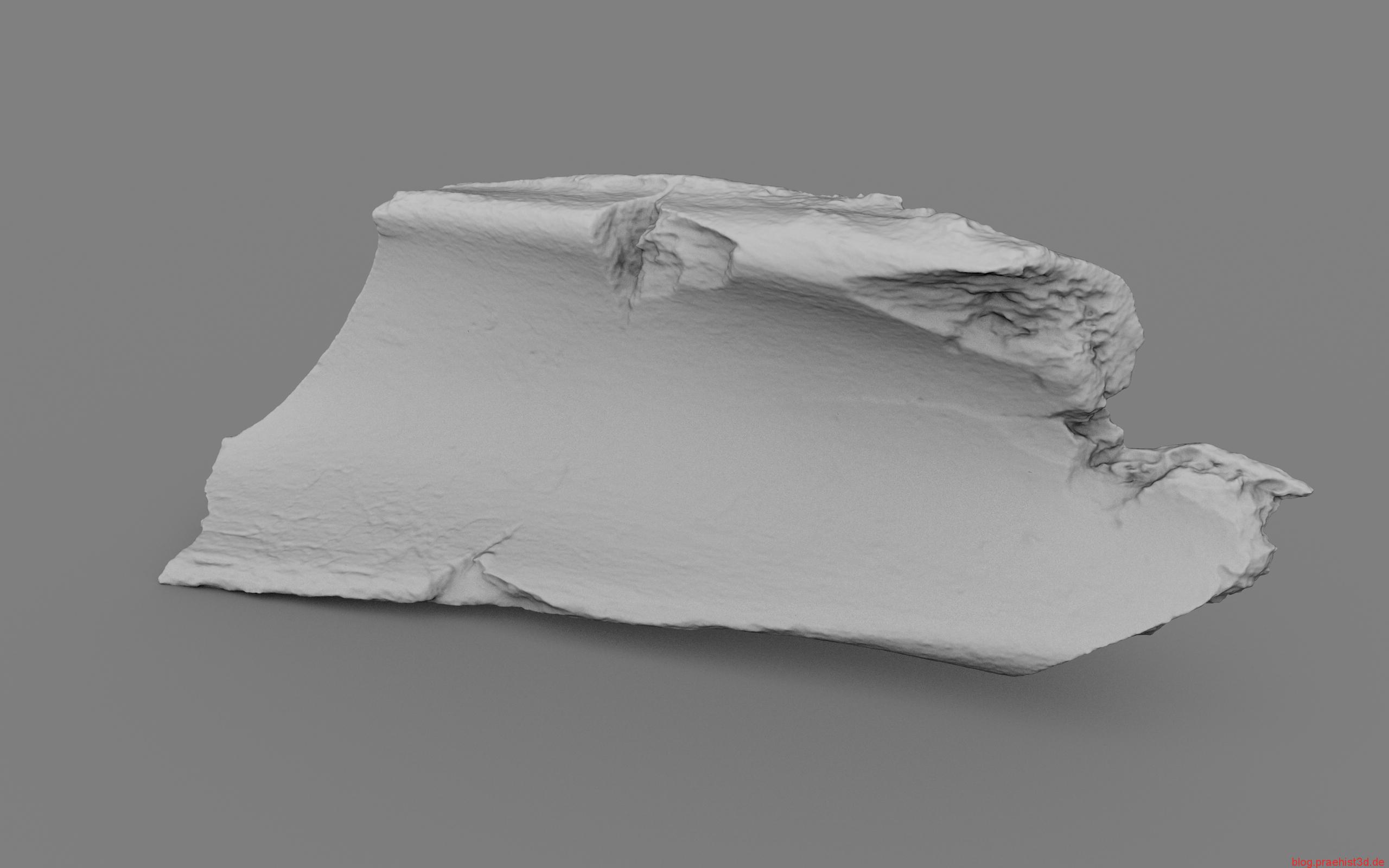
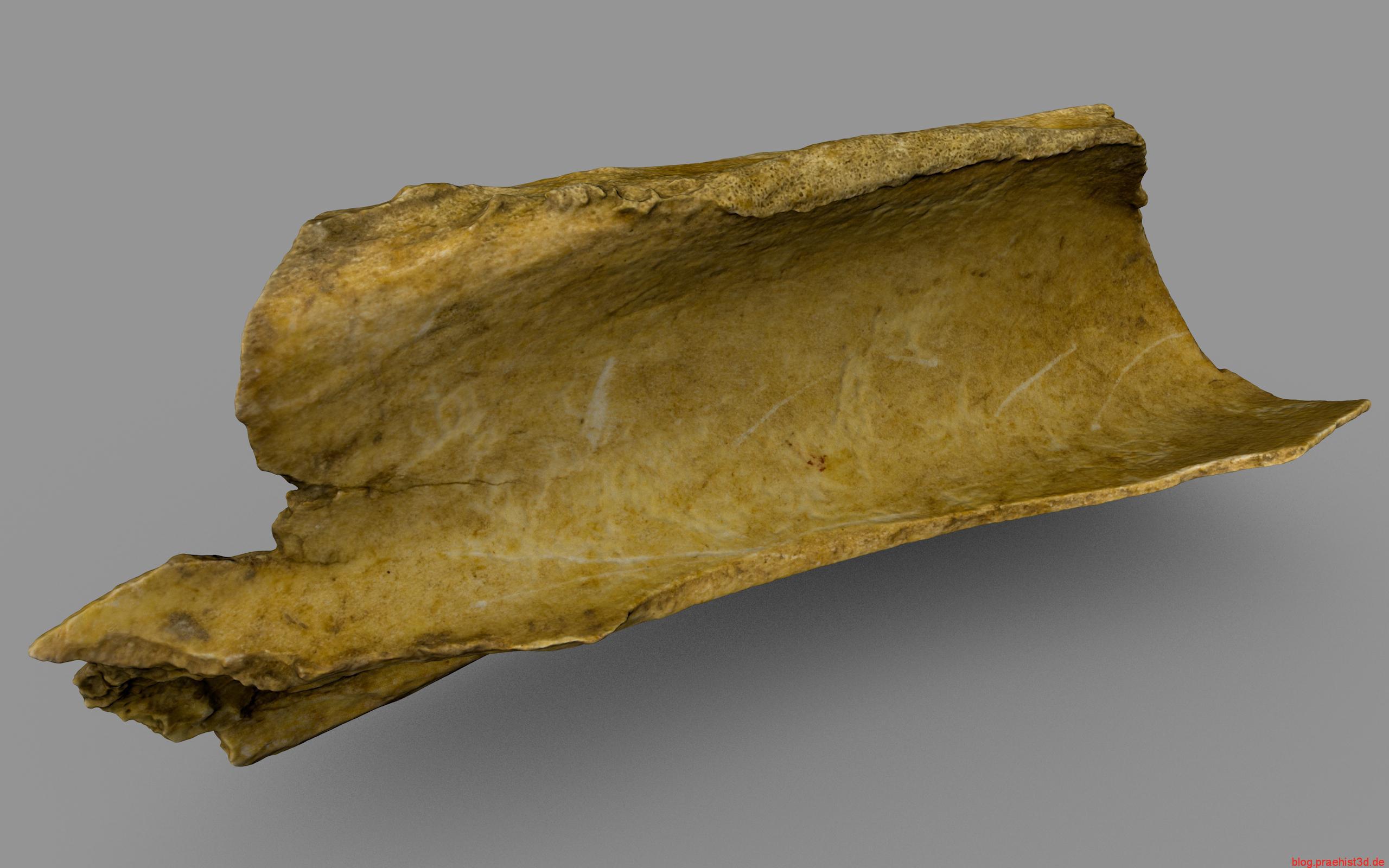
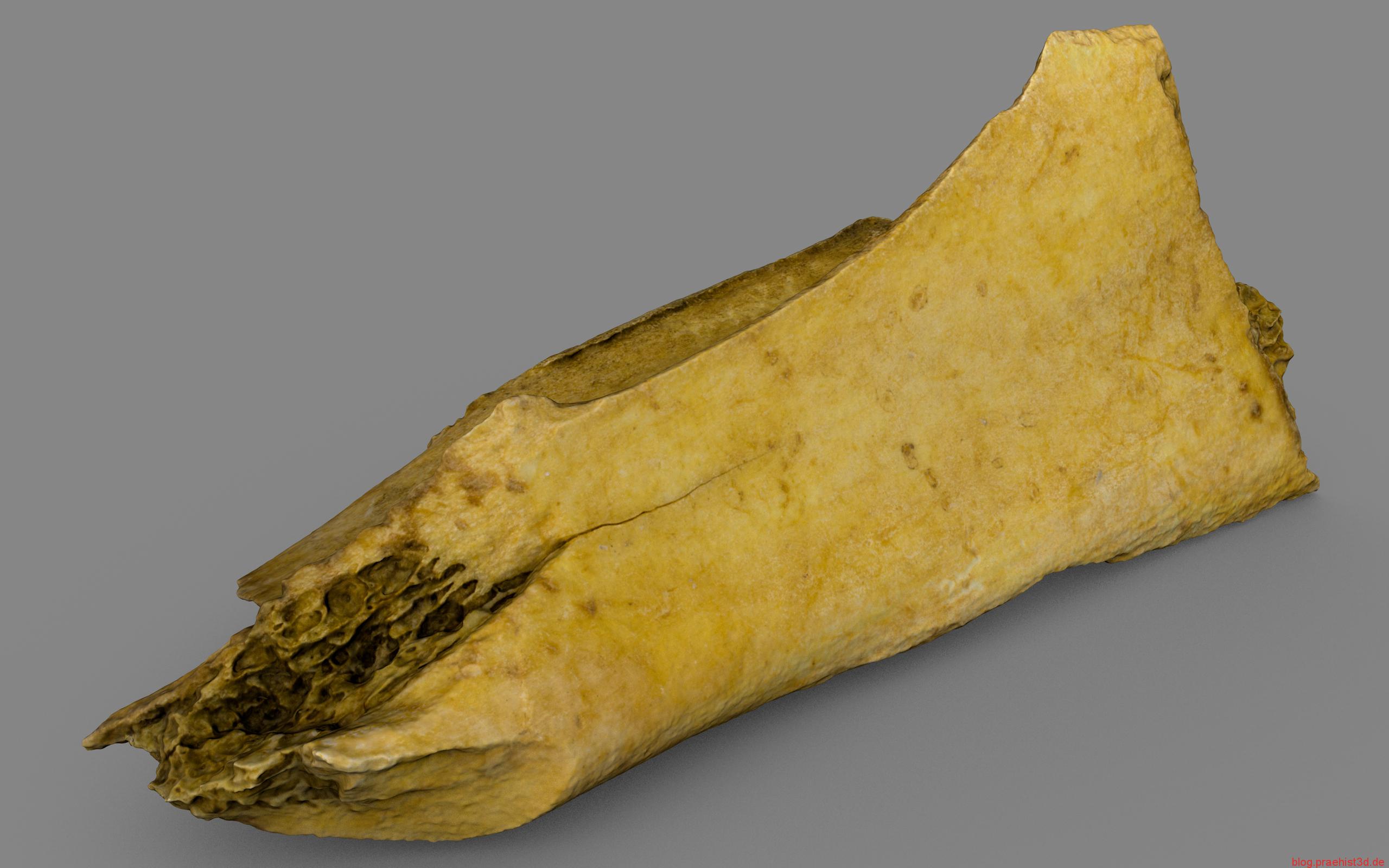
Surely, it is too complicated and time-consuming to create 3D models from normal settlement waste. It should only be tried once what analyzes are possible and what information could be gained from it.
Cut marks
Directly on the model, the cut and hack traces the butcher made 1,500 years ago are very visible. I faced textured and untextured render images for better visibility here.
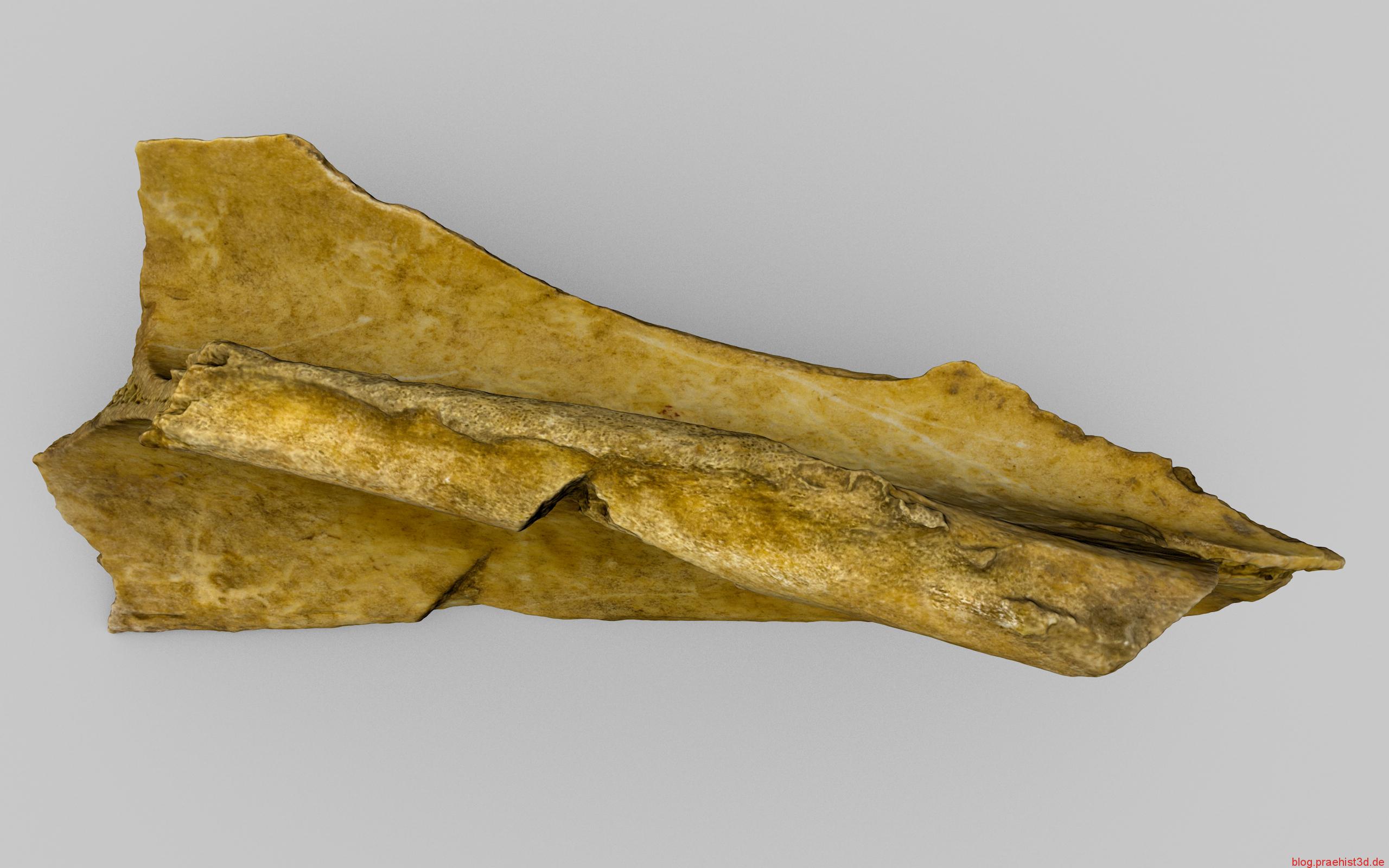
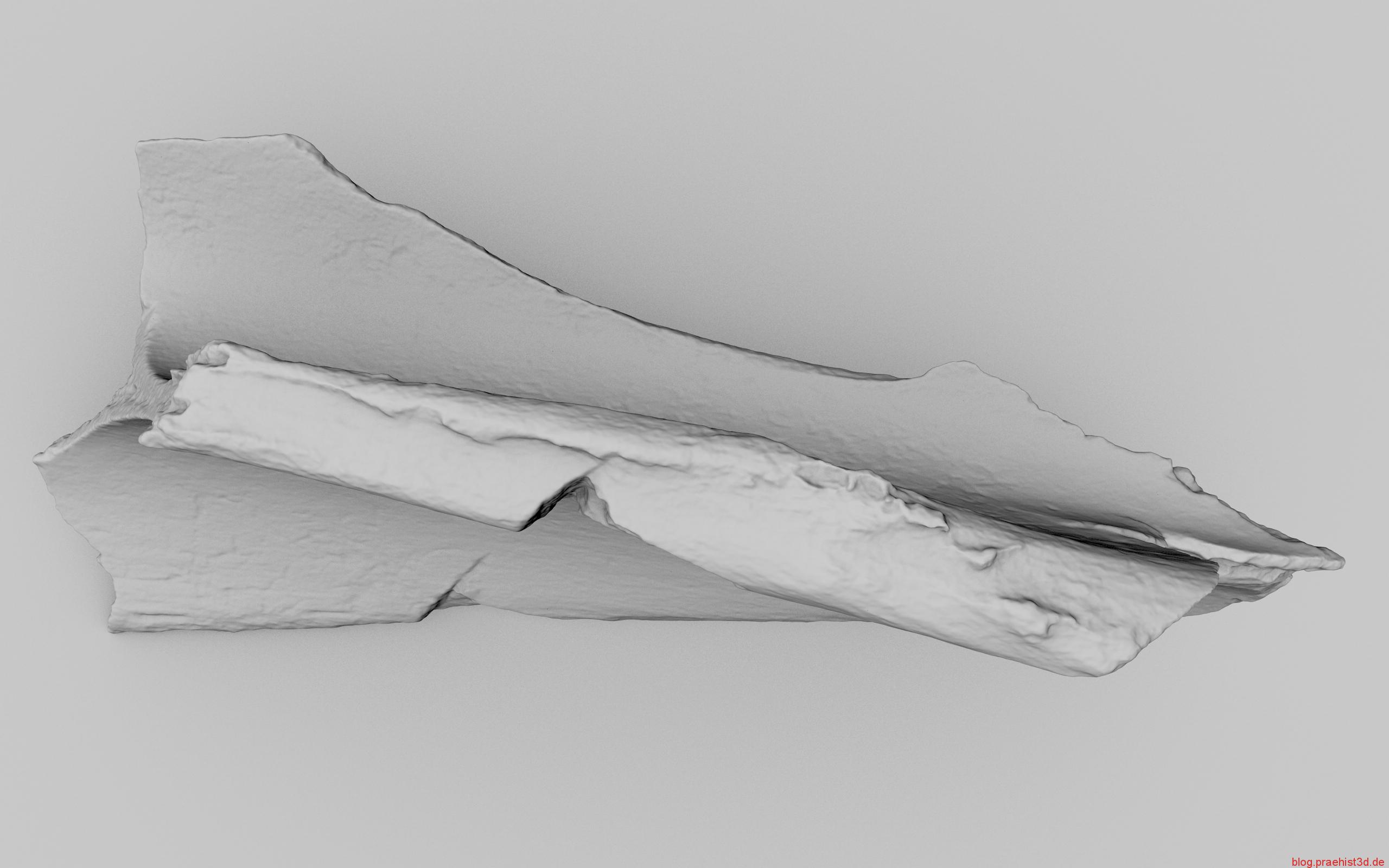
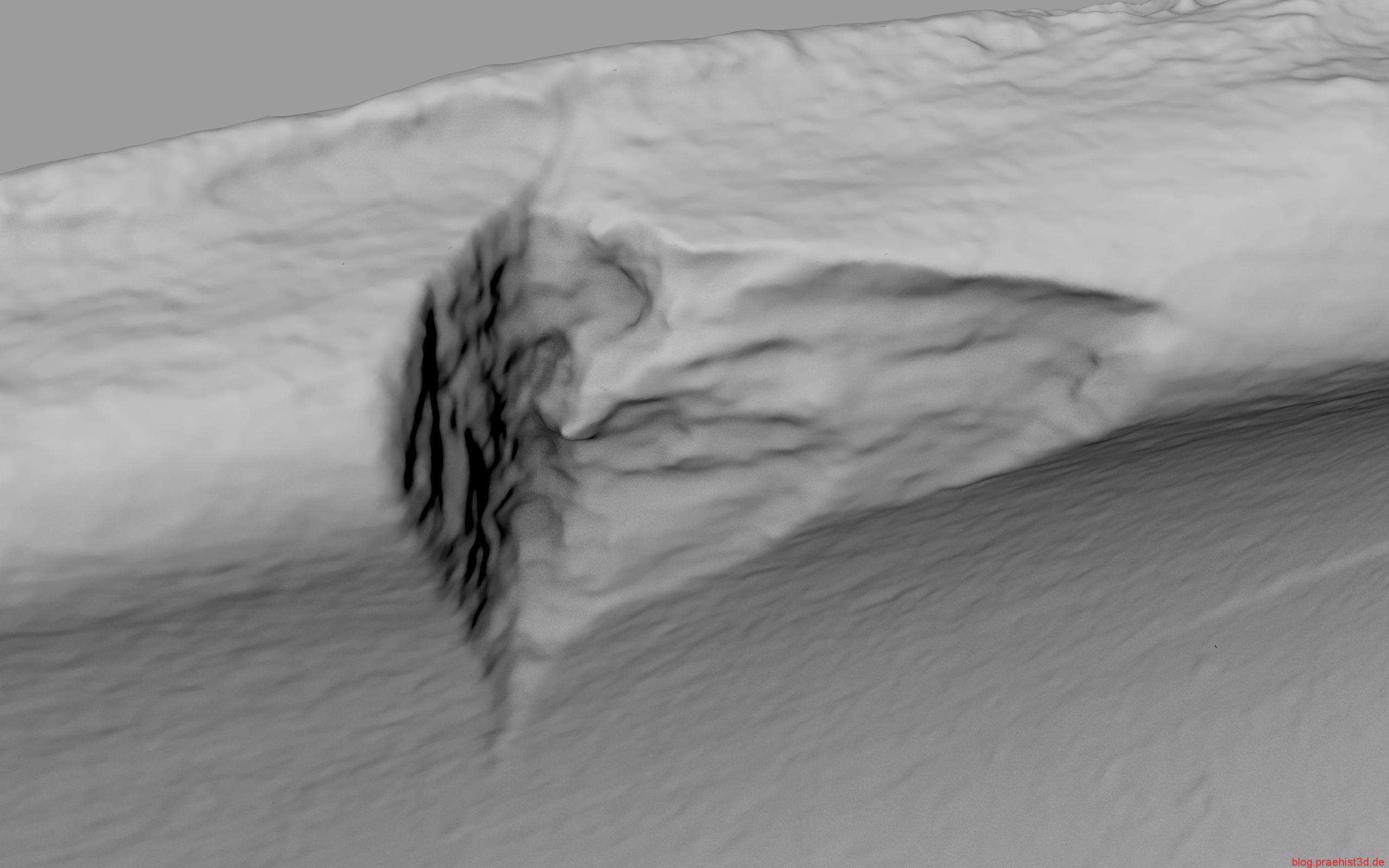
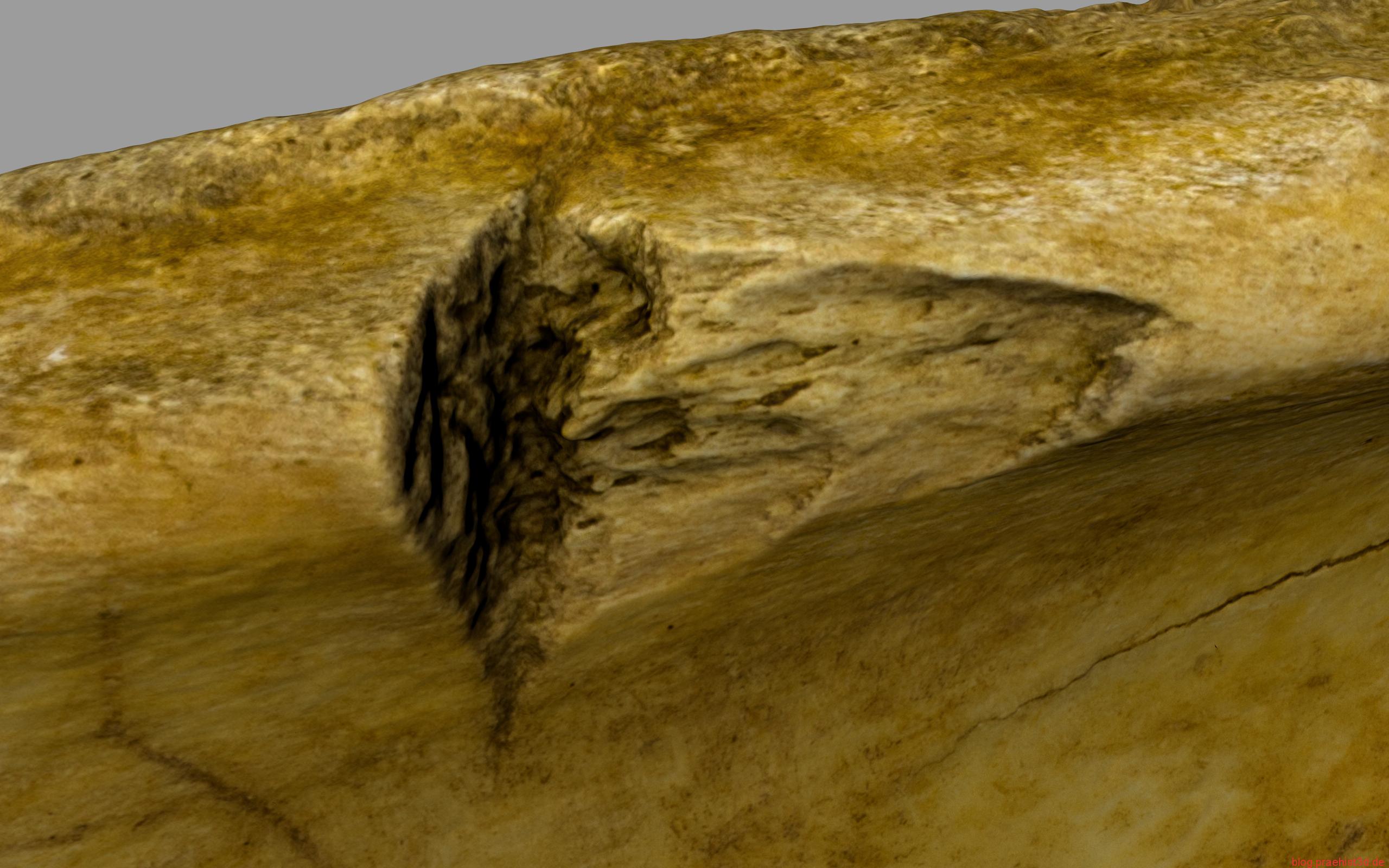
The main cut is striking the object across the hole width with an interruption in the deeper lying middelpart. He probably comes from a sharp blade or axe.
Ideas for analysis
I plan to reconstruct on the basis of this model the width of the blade, the impact angle and the batting order. I have tried this once with the first big cut.
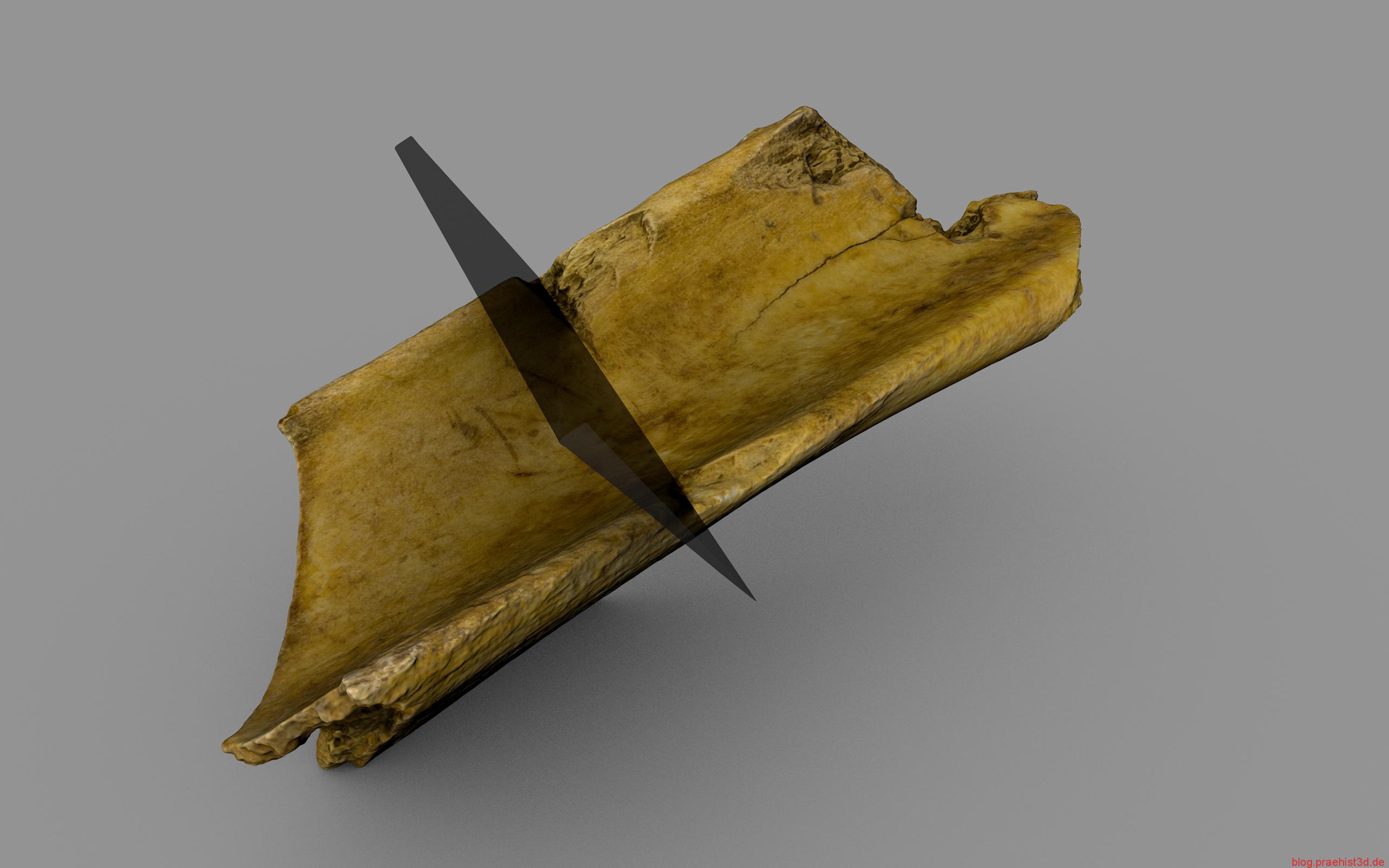

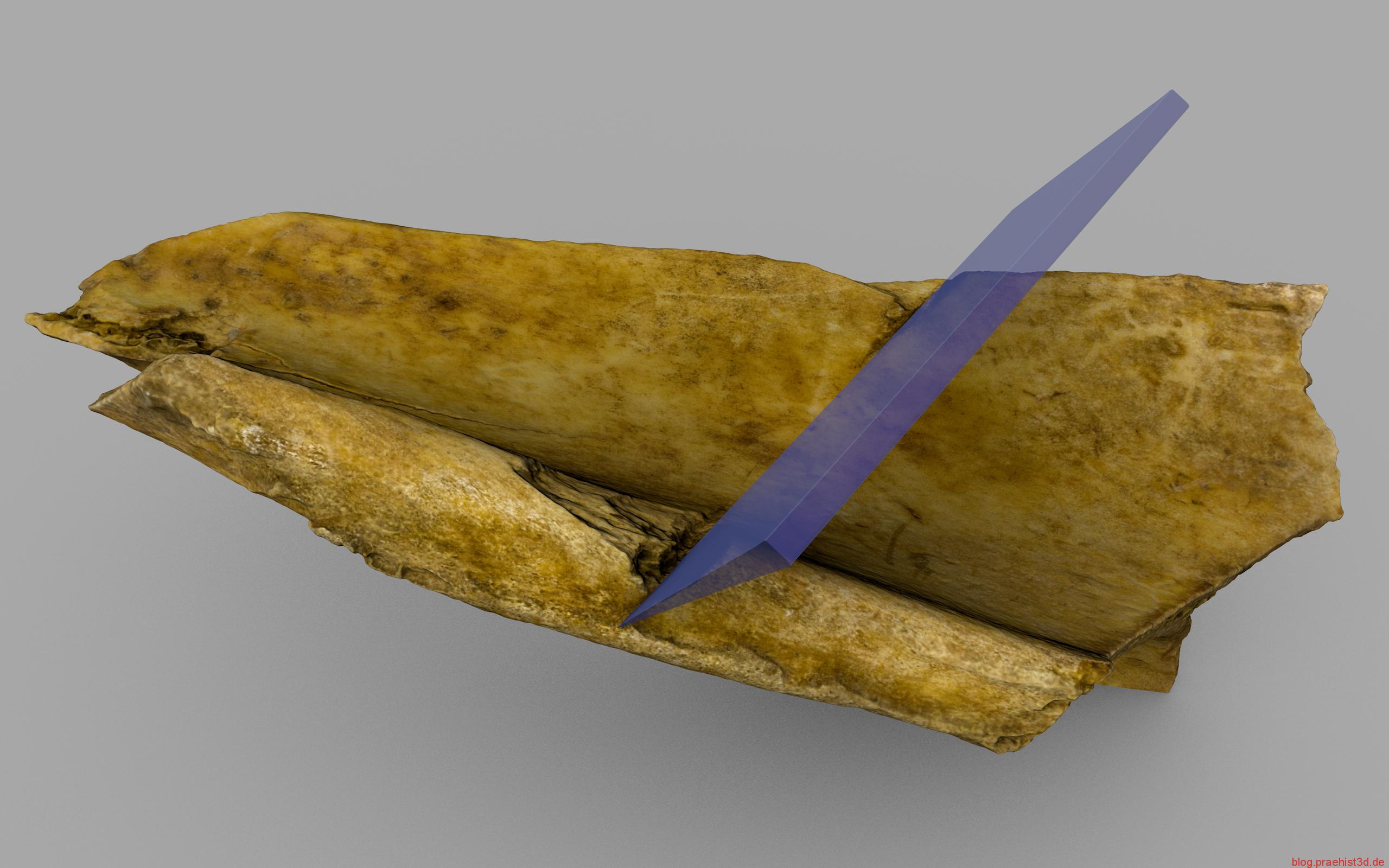
It is obvious that there are several smaller cuts right next to this big one. The difficulty is to visualize all the strokes in a picture and to sort them in the right cut order.
So that’s it this far.
More pictures and hopefully conclusions come as soon as I find answers to the following topics:
- most accurate sequence of further cuts and breaks
- the correct display method is found
- Angle of strokes
- The width and shape of the blade
If you have any literature to the topic of cut marks and their order, i would be very happy if you leave a comment or contact me directly.
Kontakt aufnehmen:
Haben Sie Interesse an 3D-Scans, Drucken, Rekonstruktionen, Workshops oder Fragen? Dann melden Sie sich!
